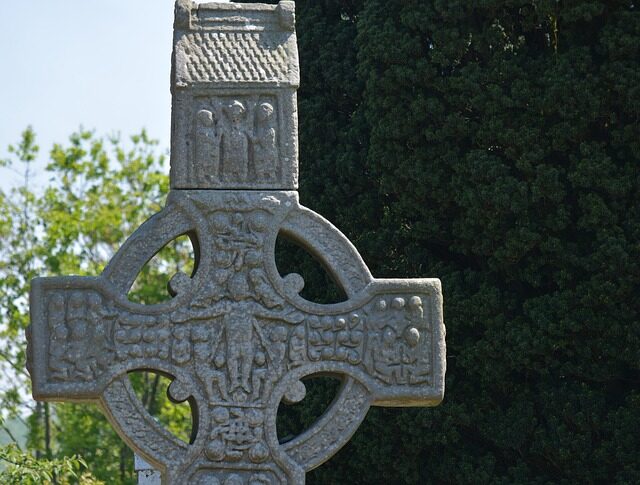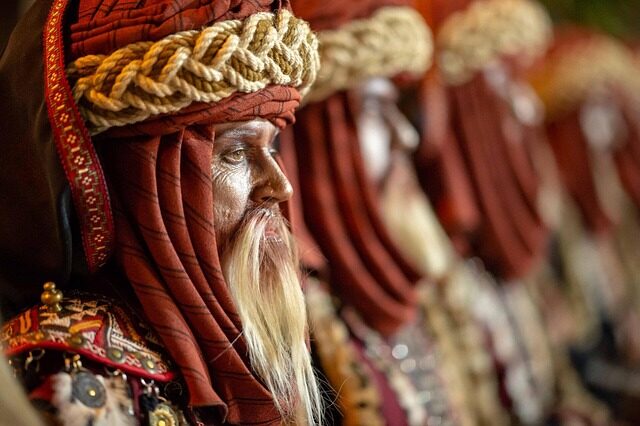The shift from Norse paganism to Christianity was a pivotal chapter in Scandinavian history. This transformation, known as the Christianization of Scandinavia, not only redefined religious belief systems but also brought significant societal and cultural changes.
The complex process spanned centuries, with the establishment of archdioceses by the 12th century marking a formal end to it. Understanding this historical transition provides insight into the cultural evolution of modern Scandinavian nations.
- Why was the christianization of scandinavia significant?
- What were the key events in the christianization of scandinavia?
- How did vikings adopt christianity over time?
- Who played a major role in the christianization of scandinavia?
- What are the main differences between paganism and christianity in scandinavia?
- How did trade influence the christianization process?
- What were the long-term effects of the christianization of scandinavia?
- Why did vikings convert to christianity?
- Who converted the vikings to christianity?
- What was the timeline of the christianization of scandinavia?
- What are the effects of the christianization of scandinavia?
- What were the motives for conversion?
- Why was the christianization of scandinavia significant?
- What were the key events in the christianization of scandinavia?
- How did vikings adopt christianity over time?
- Who played a major role in the christianization of scandinavia?
- What are the main differences between paganism and christianity in scandinavia?
- How did trade influence the christianization process?
- What were the long-term effects of the christianization of scandinavia?
- Why did vikings convert to christianity?
- Who converted the vikings to christianity?
- What was the timeline of the christianization of scandinavia?
- What are the effects of the christianization of scandinavia?
- What were the motives for conversion?
Why was the christianization of scandinavia significant?
The significance of the Christianization of Scandinavia lies in its profound impact on the region’s cultural, social, and political landscapes. As pagan beliefs gave way to Christian practices, a new societal framework began to emerge, influencing law, art, and governance.
Beyond spiritual changes, the adoption of Christianity facilitated stronger ties with other European Christian nations, particularly through marriage alliances and trade. This integration played a crucial role in shaping the Scandinavian identity and its place within the broader European context.
Moreover, the shift to Christianity marked the end of the Viking Age, transitioning the region from a period characterized by raids and expansion to one focused on state-building and consolidation of power.
What were the key events in the christianization of scandinavia?
The Christianization process was gradual and marked by several key events. Ansgar, the «Apostle of the North,» established the first churches in the region around the 830s in Birka and Hedeby. However, a cohesive church network took time to develop.

- Harald Bluetooth’s conversion and his declaration of Denmark as a Christian nation.
- The establishment of the first dioceses and the construction of churches across the region.
- The interplay between pagan leaders and Christian missionaries, which often led to religious syncretism.
- The creation of significant Christian artifacts like the Jelling Stone, which depicted Christian symbolism alongside pagan imagery.
How did vikings adopt christianity over time?
The Vikings’ adoption of Christianity was not instantaneous, nor was it uniform across the region. The initial approach to Christianity was often pragmatic, with rulers like Harald Bluetooth adopting the new faith for political and economic gains, such as securing trade routes and alliances.
As trade with Christian Europe increased, so did the influence of Christian merchants and missionaries. This, paired with political ambitions, led to a gradual but intentional push towards Christianity from the top echelons of society down to the common folk.
The conversion process also varied greatly within different regions of Scandinavia, with some areas holding onto pagan beliefs much longer than others. This resulted in a complex religious landscape where Christianity and Norse paganism coexisted for a time.
Who played a major role in the christianization of scandinavia?
Several influential figures played pivotal roles in the Christianization process. Harald Bluetooth is often credited as the driving force in Denmark’s conversion, while Ansgar is remembered for his missionary work and church foundations.
- Harald Bluetooth – Unified Denmark and Norway under Christianity.
- Ansgar – Known as the «Apostle of the North,» he was instrumental in establishing the first Christian churches.
- Olof Skötkonung – The first Christian king of Sweden who supported the establishment of the first bishopric.
- Other missionaries and clerics who contributed to the spread of Christian teachings and the construction of churches.
What are the main differences between paganism and christianity in scandinavia?
The transition from paganism to Christianity in Scandinavia involved a fundamental shift in religious beliefs and practices. Norse paganism was polytheistic, with a pantheon of gods and goddesses, and it placed significant emphasis on rituals and sacrifices to influence everyday life.
Christianity, in contrast, introduced a monotheistic belief system centered on the worship of one God, with an emphasis on salvation, morality, and an afterlife in heaven or hell. This new religion also brought with it the structure of the Church, which played a significant role in governing and education.

The differences between these religions were evident in their art and iconography, burial practices, and societal norms, underscoring a deep transformation in Scandinavian culture and identity.
How did trade influence the christianization process?
Trade was a crucial catalyst in the spread of Christianity throughout Scandinavia. As Vikings engaged in trade with Christian Europe, they encountered Christian merchants and craftsmen, through whom they were exposed to new beliefs and practices.
The importance of establishing trade alliances often necessitated at least a superficial acceptance of Christianity, as Christian kingdoms preferred to deal with fellow believers. This economic motivation supported the spread of Christian influence, particularly in coastal and trading centers.
Additionally, the wealth acquired through trade allowed for the patronage of churches and religious art, further embedding Christian culture within the fabric of Scandinavian society.
What were the long-term effects of the christianization of scandinavia?
The long-term effects of the Christianization of Scandinavia were profound and multifaceted. The establishment of Christianity laid the groundwork for modern nation-states, with a unified religious and legal system.
Christianity also brought about the end of the Viking Age, as Scandinavian societies shifted their focus from raiding to state-building and Christianized kings worked to consolidate their power. Education and literacy saw a significant boost, largely due to the efforts of the Church.

The new religion also reshaped Scandinavian culture, influencing art, literature, and societal values. Monuments like the Jelling Stone testify to the transformation from a pagan to a Christian society, encapsulating the duality of beliefs during the transition period.
For a deeper understanding of this historical period, let’s take a look at a video that explores the nuances of the Christianization of Scandinavia:
Why did vikings convert to christianity?
Vikings converted to Christianity for a variety of reasons, both pragmatic and political. Trade relationships, alliances with powerful Christian rulers, and the desire for increased social cohesion within growing states all played a role.
Some rulers, like Harald Bluetooth, saw the adoption of Christianity as a way to legitimize their power and to maintain peace and order in their realms. The influence of Christian queens and other nobility cannot be overlooked, as they often brought their faith with them into pagan courts.
Who converted the vikings to christianity?
Missionaries like Ansgar were instrumental in the initial spread of Christian teachings, but ultimately it was the rulers, such as Harald Bluetooth and Olaf Tryggvason, who played decisive roles in converting the Vikings to Christianity.

These leaders, often after converting themselves, promoted the new religion within their territories, sometimes by force, other times through incentives or as a condition for trade and peace treaties.
What was the timeline of the christianization of scandinavia?
The Christianization of Scandinavia spanned roughly four centuries, with the 830s marking the beginning of Ansgar’s missionary work and the 12th century seeing the formal establishment of archdioceses. Key moments include:
- 830s-860s: Ansgar’s missions to Birka and Hedeby, establishing the first Christian churches.
- 960s: Harald Bluetooth declares Denmark a Christian nation.
- 1000s: Conversion of Norway and Sweden, with Christian kings supporting the establishment of Christianity.
- 1100s: Formal establishment of the Church’s structure with archdioceses.
What are the effects of the christianization of scandinavia?
The effects of the Christianization process were both immediate and long-lasting. The immediate changes included the introduction of Christian institutions such as the Church, which played a major role in governance, education, and societal norms.
In the long term, Christianity’s influence on Scandinavian law, language, and art continues to be felt to this day. It also led to the end of the traditional Viking way of life, ushering in a period of relative peace and increased contact with the rest of Europe.
What were the motives for conversion?
The motives for conversion were complex and varied across the region. Some rulers sought to strengthen their power and consolidate control over their territories. Others were motivated by economic interests, seeking to enhance trade relationships with Christian Europe.
There were also social motives, as Christianity promised a more structured and predictable society underpinned by a shared set of beliefs and values, which was appealing to many in a time of great change.


